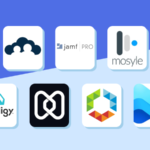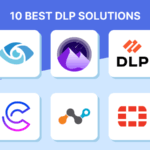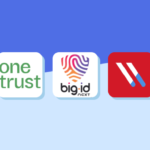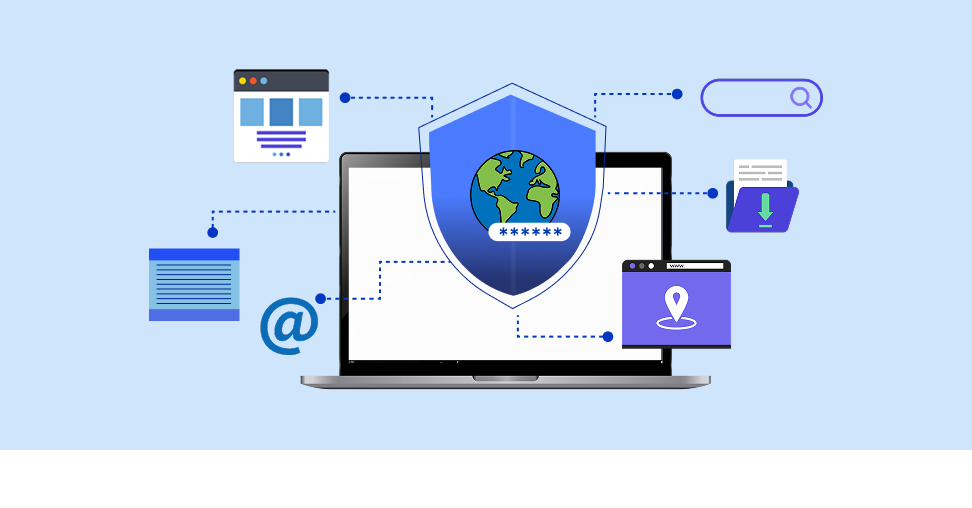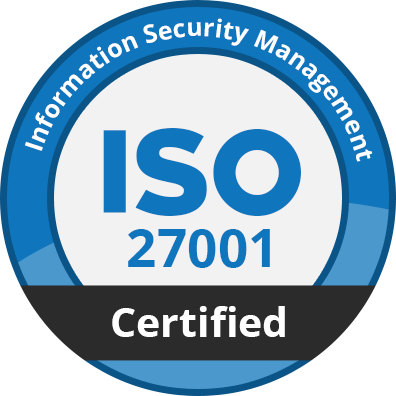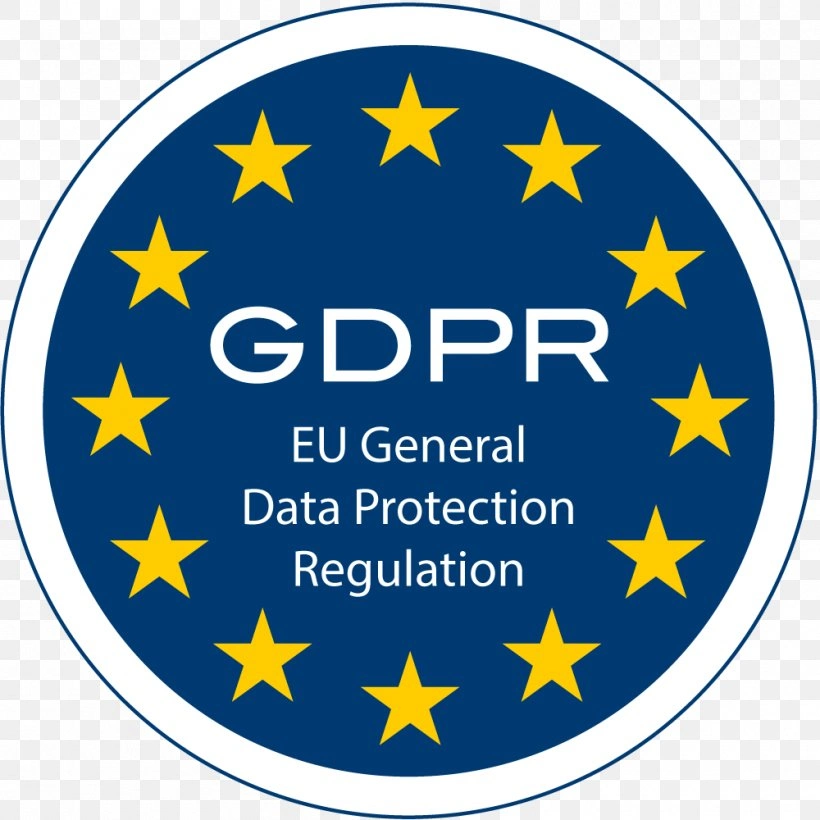Table Of Content
Top Security Service Edge (SSE) & SASE Vendors for Hybrid Work in 2025
-
August 10, 2025
-
We analyzed 30+ SASE or SSE companies redefining secure access in the hybrid work era. These vendors aren’t just iterating on old tech, they’re integrating Zero Trust, AI-driven threat detection, and endpoint or cloud-native architecture into unified platforms.
The Result??
A list of 12 SSE vendors and companies turning the secure hybrid work vision into secure solutions. In this article, we are revealing our list of top SSE vendors for hybrid remote work security in 2025.
Let’s dive right in!
TL;DR Summary of the SSE Vendor Landscape in 2025:
- SSE Explained Simply: Secure Service Edge (SSE) is a cloud-delivered security framework combining SWG, ZTNA, CASB, and DLP to protect users, apps, and data regardless of location—part of the broader SASE model.
- Why SSE Matters Now: In 2025, hybrid workforces, cloud-first strategies, and AI-driven threats demand SSE’s unified, location-agnostic protection and adaptive, zero-trust access controls.
- Key Capabilities Required: Leading SSE solutions include Secure Web Gateway (SWG), SaaS & Internet Access (SSA/SIA), Zero Trust Network Access (ZTNA), Advanced DLP, UEBA, sandboxing, and threat response—all delivered from a global, cloud-native architecture.
- CISO Evaluation Priorities: Decision-makers should prioritize vendor experience, cloud-native scalability, global reach, zero trust consistency, seamless integration with current tools, strong SLAs, and simplified management.
- Critical Questions to Ask Vendors: Topics include SASE roadmap, integration depth, performance at scale, endpoint agent requirements, real-world deployments, and user experience optimization.
List of Top SSE Vendors in 2025:
- Kitecyber: Industry’s 1st Endpoint-first SSE with AI anti-phishing and device-centric architecture.
- Zscaler: Market leader with unified ZIA/ZPA cloud services.
- Palo Alto Prisma Access: Full-stack security with proactive digital experience monitoring.
- Cisco Umbrella: DNS-layer enforcement powered by Talos threat intel.
- Cloudflare One: Vast edge network with native DDoS, ZTNA, and inline CASB.
What are SSE vendors?
SSE vendors deliver these core functions alongside advanced threat prevention (sandboxing, malware protection, DLP), inline cloud posture management, and user experience monitoring.
- Secure Web Gateway (SWG): Real-time inspection and filtering of web traffic to block malware, phishing, and unsanctioned apps.
- Secure SaaS Access (SSA) & Secure Internet Access (SIA):Visibility and control over sanctioned and unsanctioned cloud applications, API-level controls, shadow SaaS discovery and classification.
- Zero-Trust Network Access (ZTNA): Adaptive, least-privilege access to internal resources based on continuous user and device authentication.
- Advanced Data Protection:Data loss prevention (DLP), content disarm and reconstruction (CDR), and contextual encryption to safeguard sensitive information.
- Threat Prevention & Response: Inline cloud sandboxing, real-time analytics, UEBA, and automated remediation workflows.
Why SSE Vendors Matter in 2025
- Distributed Workforces: Employees access corporate resources from various locations and devices, necessitating secure, location-agnostic access controls.
- Cloud-First Strategies: Organizations rely heavily on cloud services, requiring security solutions that can protect data across multiple cloud environments.
- Advanced Threats: Cyber threats have become more sophisticated, leveraging AI and machine learning to bypass traditional security measures.
- Save Money: Combine tools to cut costs by 25-40%.
- Stay Compliant: Meet rules like GDPR, HIPAA, and PCI DSS easily.
- Stop Threats: Use AI to block advanced attacks.
- Grow Easily: Scale from 100 to 10,000 users without hassle.
- Track Everything: See all apps, users, and devices in real time.
- Adopt Zero Trust: Prevent breaches by trusting no one automatically.
Key Factors CISOs Must Consider When Evaluating SSE Vendors
Key criteria CISOs must consider while evaluating a SASE vendor include:
1. Comprehensive Security Capabilities
2. Cloud-Native Architecture and Global Reach
3. Zero Trust and Consistent Policy Enforcement
4. Scalability, Reliability, and Performance
5. Integration and Interoperability
6. Vendor Track Record and Innovation
7. Support, Managed Services, and Ease of Management
8. Data Privacy, Compliance, and Reporting
Questions to Ask SSE Vendors
1. What is your SASE strategy and how does your SSE offering fit into a broader SASE roadmap?
2. How well does your solution integrate with my existing security stack and third-party tools?
3. What is your track record for scalability, reliability, and performance under real-world conditions?
4. How many agents are required on endpoints, and what is the cost structure per device or user?
5. What are your platform’s strengths and weaknesses, and how do they align with my organization’s priorities?
6. What is your approach to Zero Trust Network Access (ZTNA), and how flexible is your solution for complex environments?
7. How streamlined is the management experience, and can I enforce consistent policies across channels?
8. What is the end-user experience like, and how do you minimize business disruption?
9. Can you provide recent case studies, customer references, and proof of successful deployments?
What are Top 10 SSE Vendors in 2025
1. Kitecyber SSE Solution
What are Kitecyber’s SSE features?
Kitecyber SSE = 5 Modules, One Platform. One Dashboard, One Endpoint Agent, One Device Trust Engine.
It protects your users, apps, and data at the endpoint, no need for cloud gateways or hardware. It handles app sprawl, phishing, and supply chain risks. It meets compliance standards like SOC2, HIPAA, GDPR, PCI DSS, NIST, CSA, and CIS. Ideal for any business.
What are Kitecyber’s SSE features?
- Unified Endpoint Management (UEM) secures devices easily.
- Secure Internet Access (SIA) stops phishing instantly.
- Secure SaaS Access (SSA) controls app usage.
- Zero Trust Private Access replaces old VPNs.
- Data Security with DLP protects data at rest and in transit.
- SaaS App Governance reduces costs and risks.
- User Behavior Analysis spots unusual activity.
- Phishing Protection reacts in milliseconds.
Who are Kitecyber’s SSE competitors?
How does Kitecyber integrate with cloud vendors?
How well does Kitecyber SSE fares with Legacy SSE Vendors?
We prepared a datasheet that compares Kitecyber with other legacy providers. Give it a read!
or
Looking to experience Kitecyber’s SSE Capabilities First-hand?
Start Free Trial and find out why renowned CISOs and companies partner with us to elevate their security posture.
2. Zscaler SSE Solution
What is Zscaler?
What are Zscaler’s SSE features?
- Zero Trust Exchange for secure access.
- AI-powered Threat Protection.
- Data Loss Prevention (DLP) for all channels.
- Cloud Firewall with precise control.
- Browser Isolation for risky websites.
- SaaS Security Posture Management.
- User Behavior Analytics.
Who are Zscaler’s SSE competitors?
How does Zscaler integrate with cloud vendors?
3. Palo Alto Networks Prisma Access
What is Palo Alto Networks Prisma Access?
What are Prisma Access’s SSE features?
- Real-time protection for web threats.
- ZTNA to reduce attack risks.
- SaaS Posture Management.
- Firewall-as-a-Service (FWaaS) with app control.
- 99.999% uptime guarantee.
- 5x faster app performance.
- Streamlined SASE management.
Who are Prisma Access’s competitors?
How does Prisma Access integrate with cloud vendors?
4. Cisco Umbrella
What is Cisco Umbrella SSE?
What are Cisco Umbrella’s SSE features?
- Umbrella for DNS security.
- Secure Web Gateway for safe browsing.
- CASB for cloud apps.
- ZTNA for private access.
- Threat Intelligence updates.
- Automated threat response.
- Clear Visibility Dashboard.
Who are Umbrella’s competitors?
How does Umbrella integrate with cloud vendors?
5. Cato Networks SASE Cloud
What is Cato Networks SASE?
What are Cato’s SSE features?
- Controls WAN and Internet traffic.
- Zero Trust with least privilege.
- Unified Management Console.
- Self-Maintaining Service.
- Advanced Threat Prevention.
- Remote Browser Isolation (RBI).
- Built-in FWaaS.
Who are Cato’s competitors?
How does Cato integrate with cloud vendors?
6. Netskope Security Service Edge
What is Netskope SSE?
What are Netskope’s SSE features?
- Unified security for web, cloud, and private apps.
- Advanced Analytics for better insights.
- Private Access as a VPN replacement.
- Cloud Exchange for easy integrations.
- SWG, CASB, and ZTNA in one.
- Machine Learning for Threat Prevention.
- DLP for sensitive data.
Who are Netskope’s competitors?
How does Netskope integrate with cloud vendors?
7. Proofpoint Information & Cloud Security Platform
What is Proofpoint SSE?
What are Proofpoint’s SSE features?
- Email encryption and archiving
- Signature-based detection
- Anti-spoofing capabilities
- Data loss prevention (DLP)
- Identity protection.
Who are Proofpoint’s competitors?
How does Proofpoint integrate with cloud vendors?
8. Barracuda CloudGen WAN & Access
What is Barracuda SSE?
What are Barracuda’s SSE features?
Who are Barracuda’s competitors?
How does Barracuda integrate with cloud vendors?
9. Menlo Security Cloud Security Platform
What is Menlo SSE?
What are Menlo’s SSE features?
- Cloud-Delivered Secure Web Gateway (SWG) with isolation-based threat protection.
- Cloud Access Security Broker (CASB) for SaaS visibility and control.
- Zero Trust Network Access (ZTNA) for secure, least-privilege access.
- Remote Browser Isolation to block phishing, malware, and zero-day exploits.
- Data Loss Prevention (DLP) focused on browser and cloud app security.
- Advanced Threat Protection with HEAT Shield AI and sandboxing.
- Application Access Control for managed and unmanaged devices.
- SaaS Governance with centralized monitoring and analytics.
Who are Menlo’s competitors?
How does Menlo integrate with cloud vendors?
10. Cloudflare One
What is Cloudfare SSE?
What are Cloudflare One’s SSE features?
- Magic Transit for network protection.
- Zero Trust Access for users.
- Browser Isolation for risky sites.
- Data Loss Prevention.
- CASB for cloud apps.
- AI-driven Threat Detection.
- Scalable Performance.
- FWaaS
- DNS security
- DDoS mitigation
Who are Cloudflare’s competitors?
How does Cloudflare integrate with cloud vendors?
11. iboss Zero Trust SSE
What is iboss Zero Trust SSE?
What are iboss Zero Trust SSE features?
- Zero Trust Edge for security.
- CASB for app visibility.
- Malware Defense system.
- Data Security tools.
- Compliance Enforcement.
- Detailed Logging.
- Scalable Cloud Platform.
Who are iboss Zero Trust competitors?
12. Check Point Harmony Connect
What is Check Point Harmony Connect SSE?
What are Check Point Harmony Connect SSE features?
- Browser Security for safe browsing.
- ZTNA for app access.
- SWG for web filtering.
- DLP Policies for data.
- Threat Emulation.
- Mobile Device Protection.
- Easy-to-Use Management.
Who are Check Point Harmony Connect SSE competitors?
SSE Vendor Comparison Matrix
|
Vendor |
Zero Trust |
AI Threat Detection |
Cloud Integrations |
Compliance Support |
Ease for Small Businesses |
Scalability for Enterprises |
|
Kitecyber |
Yes |
Yes |
AWS, Azure, Google, Okta |
SOC2, HIPAA, GDPR, PCI DSS, NIST, CSA, CIS |
High |
High |
|
Zscaler |
Yes |
Yes |
AWS, Azure, Google, Okta |
GDPR, HIPAA, PCI DSS |
Medium |
High |
|
Palo Alto Prisma Access |
Yes |
Yes |
AWS, Azure, Google, Panorama |
GDPR, HIPAA, PCI DSS |
Low |
High |
|
Cisco Umbrella |
Yes |
Yes |
Azure, AWS, Cisco SecureX |
GDPR, HIPAA, PCI DSS |
Medium |
High |
|
Cato Networks |
Yes |
Yes |
AWS, Public Clouds, IPsec |
GDPR, HIPAA, PCI DSS |
Medium |
High |
|
Netskope |
Yes |
Yes |
AWS, Azure, Okta, SIEM |
GDPR, HIPAA, PCI DSS |
Medium |
High |
|
Proofpoint |
Yes |
Yes |
Microsoft 365, Google Workspace |
GDPR, HIPAA, PCI DSS |
Medium |
Medium |
|
Barracuda SecureEdge |
Yes |
Yes |
Azure, AWS, GCP |
GDPR, HIPAA, PCI DSS |
High |
Medium |
|
Menlo Security |
Yes |
Yes (HEAT Shield AI) |
AWS, Azure, GCP, SD-WAN |
GDPR, HIPAA |
Medium |
High |
|
Cloudflare One |
Yes |
Yes |
Google, AWS, Argo Tunnels |
GDPR, HIPAA |
High |
High |
|
iboss Zero Trust SSE |
Yes |
Yes |
Google, AWS |
GDPR, HIPAA |
High |
Medium |
Get Started On Your SSE Journey Now

Ajay Gulati
Ajay Gulati is a passionate entrepreneur focused on bringing innovative products to market that solve real-world problems with high impact. He is highly skilled in building and leading effective software development teams, driving success through strong leadership and technical expertise. With deep knowledge across multiple domains, including virtualization, networking, storage, cloud environments, and on-premises systems, he excels in product development and troubleshooting. His experience spans global development environments, working across multiple geographies. As the co-founder of Kitecyber, he is dedicated to advancing AI-driven security solutions.
